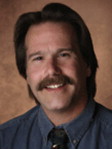
I have known our guest editor, Dr Andrew Skalsky, since he was in training at the University of California, Davis. From the start, it was clear that Andrew was going to be a leader in the field. He is very driven, highly intelligent, and visionary. I had no hesitation in asking Andrew to do this project. In fact, he came immediately to mind. I knew Andrew would come through for us and indeed he has.
Starting us off is an excellent article entitled, “The Importance of Good Nutrition in Children with Cerebral Palsy,” by Dr Gina Rempel, Chief Medical Officer of the Rehabilitation Centre for Children Pediatrics and Child Health, Winnipeg, University of Manitoba. She is the Director of Feeding Services at Children’s Hospital and Rehabilitation Centre for Children and the Pediatric Medical Director of the Manitoba Home Nutrition Program. This article defines guidelines to maximize nutrition in this fragile population.
My colleagues from the University of California, Davis, Drs Aaron Powell and Loren Davidson, provide a very thorough update on Pediatric Spinal Cord Injury. This article is organized by organ system effects, which makes it very easy to read and provides guidelines that any practicing clinician can use.
The complex topic of “Scoliosis, Spinal Fusion, and Intrathecal Baclofen Pump Implantation” is covered in detail by pediatric orthopedic specialists from Rady Children’s Hospital in San Diego, Drs Brian Scannell and Burt Yaszay. Readers will find this area nicely broken down into usable clinical guidelines and recommendations.
A very compelling and thoughtful article entitled, “Effects of Caregiving on the Families of Children and Adults with Disabilities,” is provided by Henry G. Chambers, MD and Jill A. Chambers, CHTP. I found this article to provide very useful guidelines for the overall management of this very challenging population. There is good discussion of the multifaceted psychosocial challenges that often arise and may be very hard to deal with in a clinical scenario.
My good friend and colleague, Dr Rick Lieber, along with Margie A. Mathewson, MS, provide us with an excellent article entitled, “Pathophysiology of Muscle Contractures in Cerebral Palsy.” Even ambulatory children with cerebral palsy may present with contractures, often compounded by abnormal gait patterns due to muscular spasticity. This article really delves into the underlying processes that can lead to this and proves a scientific basis for further study on how to prevent disabling contractures in this population. Rick has recently been appointed Senior Vice President of Research and Chief Scientist at the Rehabilitation Institute of Chicago, a hugely important position at our nation’s largest and preeminent rehabilitation hospital. I wish him well in this new role and I am certain he will be successful.
Pediatric rehabilitation specialists, Drs Joan T. Le and Phoebe R. Scott-Wyard, provide an outstanding update on “Pediatric Limb Differences and Amputation.” The pediatric amputee population can be very challenging and preservation of maximal limb length during amputation may not always be possible. This article provides a thorough discussion of how to maximize the efficiency and symmetry of function, including gait. The authors provide thoughtful discussion of functional outcomes given various levels of amputation and limb loss.
Dr Le, along with colleague Dr Shubhra Mukherjee, authored “Transition to Adult Care for Patients with Spina Bifida.” I think this area is very challenging, particularly when it comes to identifying the critical areas of need that must be closely followed as adolescents become adult patients with spina bifida. Many areas, such as urologic care, could pose life-threatening problems if not adequately addressed. I applaud the authors for a very comprehensive discussion of how this should occur. Delays in transition to adult care are known to be associated with higher rates of comorbidity.
“Common Complications of Pediatric Neuromuscular Disorders” is authored by Drs Skalsky and Pritha B. Dalal. For all of these disorders, there may be a plethora of problems, and it is critical to identify them early on and take a proactive management course. This article provides a tactical approach for doing this.
Dr Skalsky, along with pediatric pulmonologist, Dr Daniel J. Lesser, from Rady Children’s Hospital, and my close friend and colleague, Dr Craig M. McDonald, from UC Davis do an excellent job of covering the complex topic of phrenic nerve pacing. They provide us an article entitled, “Evaluation of Phrenic Nerve and Diaphragm Function with Peripheral Nerve Stimulation and M-Mode Ultrasonography in Potential Pediatric Phrenic Nerve or Diaphragm Pacing Candidates.”
Dr Skalsky, MD and Chrystal M. Fournier, MSN, RN, FNP-BC close out this issue with an article entitled, “Intrathecal Baclofen Bolus Dosing and Catheter Tip Placement in Pediatric Tone Management,” which goes into detail on management strategies to ensure the best outcome for those children affected by motor control disorders that can accompany the long-term effects of disorders like cerebral palsy, traumatic brain injury, and a myriad of neurologic disorders. Proper tone management with a baclofen pump can have a positive effect on issues such as standing ability, gait, and even other muscular issues such as bladder control.
As always, I want to express my sincerest gratitude to all of these renowned authors for the efforts they have put forth here in providing us with another exceptional issue of the Physical Medicine and Rehabilitation Clinics of North America series. I would like to extend a special measure of gratitude to our guest editor, and my good friend, Dr Andrew Skalsky, for leading this project and giving us such a superb and timely update on major issues in pediatric rehabilitation. These authors have given us a directly useful and highly valuable addition to the series.
Stay updated, free articles. Join our Telegram channel

Full access? Get Clinical Tree




